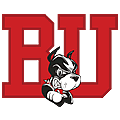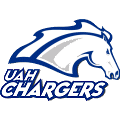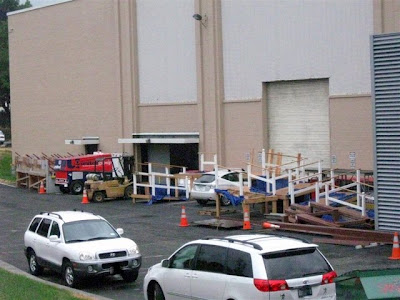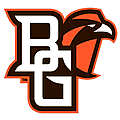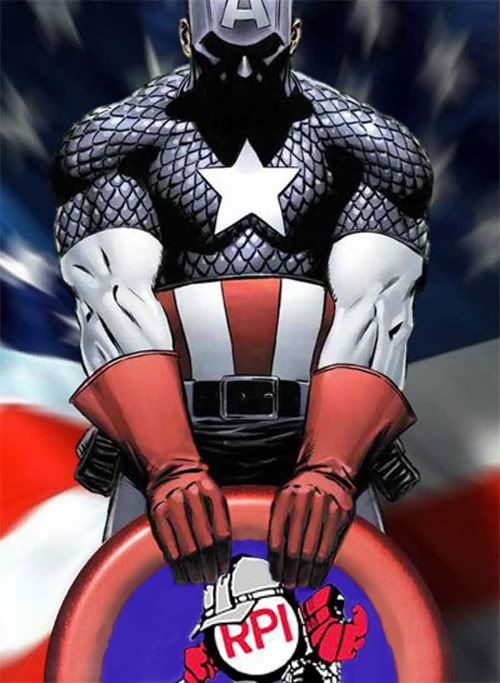That does beg the question - who is coming back? While there's still time for more underclassmen to jump ship (and we, of course, pray that Chicago's emergency minor league roster filling moves does not include calling in Brandon Pirri before he's received enough seasoning in Troy), here's what the outlook is on who should be among the top players in the ECAC, the top 10 returning players (ECAC play only) in each category. No doubt most of these are names you'll be seeing more often than not in the headlines beginning in October... with a few top freshman sprinkled in.
Points
35 - Chase Polacek, Rensselaer
31 - Broc Little, Yale
27 - Adam Estoclet, Dartmouth
27 - Brandon Pirri, Rensselaer
26 - Austin Smith, Colgate
26 - Brian O'Neill, Yale
25 - Harry Zolnierczyk, Brown
24 - Jerry D'Amigo, Rensselaer
24 - Scott Fleming, Dartmouth
23 - Brian Day, Colgate
23 - Jack Maclellan, Brown
Goals
20 - Broc Little, Yale
17 - Chase Polacek, Rensselaer
16 - Scott Fleming, Dartmouth
13 - Brian Day, Colgate
11 - Harry Zolnierczyk, Brown
10 - Francois Brisebois, Colgate
10 - Austin Smith, Colgate
10 - Adam Estoclet, Dartmouth
9 - Mike Kramer, Princeton
9 - Scott Zurevinski, Quinnipiac
9 - Jack Maclellan, Brown
9 - Kelly Zajac, Union
Assists
22 - Brandon Pirri, Rensselaer
19 - Brian O'Neill, Yale
18 - Chase Polacek, Rensselaer
18 - Adam Presizniuk, Union
17 - Jerry D'Amigo, Rensselaer
17 - Adam Estoclet, Dartmouth
17 - Denny Kearney, Yale
16 - Austin Smith, Colgate
16 - Doug Jones, Dartmouth
16 - Andrew Miller, Yale
Power Play Points
15 - Chase Polacek, Rensselaer
15 - Brandon Pirri, Rensselaer
12 - Doug Jones, Dartmouth
11 - Adam Estoclet, Dartmouth
10 - Broc Little, Yale
10 - George Hughes, St. Lawrence
10 - Jeff Buvinow, Brown
10 - Brian O'Neill, Yale
9 - Scott Fleming, Dartmouth
9 - Austin Smith, Colgate
9 - Zach Hansen, Quinnipiac
9 - Adam Presizniuk, Union
Power Play Goals
8 - Scott Fleming, Dartmouth
6 - Chase Polacek, Rensselaer
5 - Brian Day, Colgate
5 - Adam Pawlick, Clarkson
5 - Austin Smith, Colgate
5 - Broc Little, Yale
4 - Marty O'Grady, Rensselaer
4 - Brandon DeFazio, Clarkson
4 - Scott Zurevinski, Quinnipiac
4 - Harry Zolnierczyk, Brown
4 - Nick Prockow, Colgate
4 - Adam Estoclet, Dartmouth
4 - George Hughes, St. Lawrence
Short-Handed Points
5 - Chase Polacek, Rensselaer
2 - Jerry D'Amigo, Rensselaer
2 - Yuri Bouharevich, Quinnipiac
2 - Evan Stephens, Dartmouth
2 - Harry Zolnierczyk, Brown
2 - Jack Maclellan, Brown
2- Corey Tamblyn, Clarkson
2- Scott Fleming, Dartmouth
2- Jacob Drewiske, St. Lawrence
Defenseman Scoring
17 - Jeff Buvinow, Brown
16 - Evan Stephens, Dartmouth
14 - George Hughes, St. Lawrence
13 - Nick D'Agostino, Cornell
13 - Zach Hansen, Quinnipiac
13 - Jimmy Martin, Yale
12 - Taylor Fedun, Princeton
11 - Greg Coburn, Union
11 - Thomas Larkin, Colgate
11 - Chris Huxley, Harvard
Goals Against Average
2.26 - Allen York, Rensselaer
2.46 - Dan Clarke, Quinnipiac
2.54 - Keith Kincaid, Union
2.84 - Ryan Carroll, Harvard
2.95 - Kyle Richter, Harvard
2.95 - James Mello, Dartmouth
2.99 - Nick Maricic, Yale3.23 - Alex Evin, Colgate
3.57 - Paul Karpowich, Clarkson
3.82 - Mike Clemente, Brown
Save Percentage
.919 - Allen York, Rensselaer
.916 - James Mello, Dartmouth
.913 - Kyle Richter, Harvard
.913 - Ryan Carroll, Harvard
.913 - Dan Clarke, Quinnipiac
.910 - Keith Kincaid, Union
.898 - Paul Karpowich, Clarkson
.897 - Alex Evin, Colgate
.889 - Mike Clemente, Brown
.887 - Nick Maricic, Yale
Goals Per Game (Returning)
Yale - 2.81
Dartmouth - 2.68
Rensselaer - 2.59
Colgate - 2.59
Union - 2.00
Brown - 1.90
Harvard - 1.82
Princeton - 1.73
Quinnipiac - 1.73
Clarkson - 1.68
Cornell - 1.68
St. Lawrence - 1.05
35 - Chase Polacek, Rensselaer
31 - Broc Little, Yale
27 - Adam Estoclet, Dartmouth
27 - Brandon Pirri, Rensselaer
26 - Austin Smith, Colgate
26 - Brian O'Neill, Yale
25 - Harry Zolnierczyk, Brown
24 - Jerry D'Amigo, Rensselaer
24 - Scott Fleming, Dartmouth
23 - Brian Day, Colgate
23 - Jack Maclellan, Brown
Goals
20 - Broc Little, Yale
17 - Chase Polacek, Rensselaer
16 - Scott Fleming, Dartmouth
13 - Brian Day, Colgate
11 - Harry Zolnierczyk, Brown
10 - Francois Brisebois, Colgate
10 - Austin Smith, Colgate
10 - Adam Estoclet, Dartmouth
9 - Mike Kramer, Princeton
9 - Scott Zurevinski, Quinnipiac
9 - Jack Maclellan, Brown
9 - Kelly Zajac, Union
Assists
22 - Brandon Pirri, Rensselaer
19 - Brian O'Neill, Yale
18 - Chase Polacek, Rensselaer
18 - Adam Presizniuk, Union
17 - Jerry D'Amigo, Rensselaer
17 - Adam Estoclet, Dartmouth
17 - Denny Kearney, Yale
16 - Austin Smith, Colgate
16 - Doug Jones, Dartmouth
16 - Andrew Miller, Yale
Power Play Points
15 - Chase Polacek, Rensselaer
15 - Brandon Pirri, Rensselaer
12 - Doug Jones, Dartmouth
11 - Adam Estoclet, Dartmouth
10 - Broc Little, Yale
10 - George Hughes, St. Lawrence
10 - Jeff Buvinow, Brown
10 - Brian O'Neill, Yale
9 - Scott Fleming, Dartmouth
9 - Austin Smith, Colgate
9 - Zach Hansen, Quinnipiac
9 - Adam Presizniuk, Union
Power Play Goals
8 - Scott Fleming, Dartmouth
6 - Chase Polacek, Rensselaer
5 - Brian Day, Colgate
5 - Adam Pawlick, Clarkson
5 - Austin Smith, Colgate
5 - Broc Little, Yale
4 - Marty O'Grady, Rensselaer
4 - Brandon DeFazio, Clarkson
4 - Scott Zurevinski, Quinnipiac
4 - Harry Zolnierczyk, Brown
4 - Nick Prockow, Colgate
4 - Adam Estoclet, Dartmouth
4 - George Hughes, St. Lawrence
Short-Handed Points
5 - Chase Polacek, Rensselaer
2 - Jerry D'Amigo, Rensselaer
2 - Yuri Bouharevich, Quinnipiac
2 - Evan Stephens, Dartmouth
2 - Harry Zolnierczyk, Brown
2 - Jack Maclellan, Brown
2- Corey Tamblyn, Clarkson
2- Scott Fleming, Dartmouth
2- Jacob Drewiske, St. Lawrence
Defenseman Scoring
17 - Jeff Buvinow, Brown
16 - Evan Stephens, Dartmouth
14 - George Hughes, St. Lawrence
13 - Nick D'Agostino, Cornell
13 - Zach Hansen, Quinnipiac
13 - Jimmy Martin, Yale
12 - Taylor Fedun, Princeton
11 - Greg Coburn, Union
11 - Thomas Larkin, Colgate
11 - Chris Huxley, Harvard
Goals Against Average
2.26 - Allen York, Rensselaer
2.46 - Dan Clarke, Quinnipiac
2.54 - Keith Kincaid, Union
2.84 - Ryan Carroll, Harvard
2.95 - Kyle Richter, Harvard
2.95 - James Mello, Dartmouth
2.99 - Nick Maricic, Yale3.23 - Alex Evin, Colgate
3.57 - Paul Karpowich, Clarkson
3.82 - Mike Clemente, Brown
Save Percentage
.919 - Allen York, Rensselaer
.916 - James Mello, Dartmouth
.913 - Kyle Richter, Harvard
.913 - Ryan Carroll, Harvard
.913 - Dan Clarke, Quinnipiac
.910 - Keith Kincaid, Union
.898 - Paul Karpowich, Clarkson
.897 - Alex Evin, Colgate
.889 - Mike Clemente, Brown
.887 - Nick Maricic, Yale
Goals Per Game (Returning)
Yale - 2.81
Dartmouth - 2.68
Rensselaer - 2.59
Colgate - 2.59
Union - 2.00
Brown - 1.90
Harvard - 1.82
Princeton - 1.73
Quinnipiac - 1.73
Clarkson - 1.68
Cornell - 1.68
St. Lawrence - 1.05
-------------------------------------------
While we're at it... a look at the top returning players around the nation.
Points Per Game
1.56 - Gustav Nyquist, Maine
1.51 - Cory Conacher, Canisius
1.42 - James Marcou, UMass
1.33 - Chase Polacek, Rensselaer
1.32 - Stephane Da Costa, Merrimack
1.32 - Brian O'Neill, Yale
1.26 - Cam Atkinson, Boston College
1.23 - Jack Connolly, Minnesota-Duluth
1.22 - Scott Fleming, Dartmouth
1.21 - Broc Little, Yale
Goals Per Game
0.79 - Broc Little, Yale
0.71 - Cam Atkinson, Boston College
0.69 - Scott Fleming, Dartmouth
0.67 - Chase Polacek, Rensselaer
0.62 - Brian Day, Colgate
0.59 - Jacques Lamoureux, Air Force
0.57 - Cory Conacher, Canisius
0.57 - Ian Lowe, Bemidji State
0.56 - Brett Olson, Michigan Tech
0.54 - Justin Fontaine, Minnesota-Duluth
Assists Per Game
1.11 - James Marcou, UMass
1.08 - Gustav Nyquist, Maine
0.94 - Cory Conacher, Canisius
0.85 - Stephane Da Costa, Merrimack
0.85 - Brian O'Neill, Yale
0.85 - Andrew Miller, Yale
0.82 - Andrew Favot, RIT
0.82 - Brandon Pirri, Rensselaer
0.81 - Vincent Scarsella, Canisius
0.81 - Brian Gibbons, Boston College
Power Play Goals
13 - Chase Polacek, Rensselaer
13 - Justin Fontaine, Minnesota-Duluth
13 - Jacques Lamoureux, Air Force
11 - Calle Ridderwall, Notre Dame
11 - Cam Atkinson, Boston College
10 - Scott Fleming, Dartmouth
10 - Tanner House, Maine
10 - Pat Cannone, Miami
9 - Cody Omilusik, Army
9 - Dustin Sather, Alaska
9 - Ian Lowe, Bemidji State
9 - Scott Campbell, UMass-Lowell
9 - Cameron Burt, RIT
9 - Danny Kristo, North Dakota
9 - Tony Mosey, St. Cloud State
Points Per Game (Defensemen)
1.00 - Blake Kessel, New Hampshire
0.89 - Brad Hunt, Bemidji State
0.82 - Erik Gustafsson, Northern Michigan
0.79 - Will O'Neill, Maine
0.79 - Jeff Dimmen, Maine
0.69 - Denny Urban, Robert Morris
0.68 - David Warsofsky, Boston University
0.68 - Jeff Buvinow, Brown
0.68 - Zach Redmond, Ferris State
0.67 - Matthew Irwin, UMass
0.67 - Ben Youds, Minnesota State
Goals Against Average
1.87 - Cody Reichard, Miami
1.97 - Connor Knapp, Miami
2.06 - Corey Milan, Union
2.11 - Brad Eidsness, North Dakota
2.13 - Pat Nagle, Ferris State
2.20 - Scott Greenham, Alaska
2.33 - Bryan Hogan, Michigan
2.33 - Dan Bakala, Bemidji State
2.33 - Scott Gudmandson, Wisconsin
2.36 - Kenny Reiter, Minnesota-Duluth
Save Percentage
.923 - Pat Nagle, Ferris State
.921 - Connor Knapp, Miami
.921 - Cody Reichard, Miami
.919 - Scott Greenham, Alaska
.918 - Ryan Zapolski, Mercyhurst
.917 - Drew Palmisano, Michigan State
.917 - Dan Bakala, Bemidji State
.917 - Corey Milan, Union
.917 - Mike Lee, St. Cloud State
.916 - Dustin Carlson, Ohio State
1.56 - Gustav Nyquist, Maine
1.51 - Cory Conacher, Canisius
1.42 - James Marcou, UMass
1.33 - Chase Polacek, Rensselaer
1.32 - Stephane Da Costa, Merrimack
1.32 - Brian O'Neill, Yale
1.26 - Cam Atkinson, Boston College
1.23 - Jack Connolly, Minnesota-Duluth
1.22 - Scott Fleming, Dartmouth
1.21 - Broc Little, Yale
Goals Per Game
0.79 - Broc Little, Yale
0.71 - Cam Atkinson, Boston College
0.69 - Scott Fleming, Dartmouth
0.67 - Chase Polacek, Rensselaer
0.62 - Brian Day, Colgate
0.59 - Jacques Lamoureux, Air Force
0.57 - Cory Conacher, Canisius
0.57 - Ian Lowe, Bemidji State
0.56 - Brett Olson, Michigan Tech
0.54 - Justin Fontaine, Minnesota-Duluth
Assists Per Game
1.11 - James Marcou, UMass
1.08 - Gustav Nyquist, Maine
0.94 - Cory Conacher, Canisius
0.85 - Stephane Da Costa, Merrimack
0.85 - Brian O'Neill, Yale
0.85 - Andrew Miller, Yale
0.82 - Andrew Favot, RIT
0.82 - Brandon Pirri, Rensselaer
0.81 - Vincent Scarsella, Canisius
0.81 - Brian Gibbons, Boston College
Power Play Goals
13 - Chase Polacek, Rensselaer
13 - Justin Fontaine, Minnesota-Duluth
13 - Jacques Lamoureux, Air Force
11 - Calle Ridderwall, Notre Dame
11 - Cam Atkinson, Boston College
10 - Scott Fleming, Dartmouth
10 - Tanner House, Maine
10 - Pat Cannone, Miami
9 - Cody Omilusik, Army
9 - Dustin Sather, Alaska
9 - Ian Lowe, Bemidji State
9 - Scott Campbell, UMass-Lowell
9 - Cameron Burt, RIT
9 - Danny Kristo, North Dakota
9 - Tony Mosey, St. Cloud State
Points Per Game (Defensemen)
1.00 - Blake Kessel, New Hampshire
0.89 - Brad Hunt, Bemidji State
0.82 - Erik Gustafsson, Northern Michigan
0.79 - Will O'Neill, Maine
0.79 - Jeff Dimmen, Maine
0.69 - Denny Urban, Robert Morris
0.68 - David Warsofsky, Boston University
0.68 - Jeff Buvinow, Brown
0.68 - Zach Redmond, Ferris State
0.67 - Matthew Irwin, UMass
0.67 - Ben Youds, Minnesota State
Goals Against Average
1.87 - Cody Reichard, Miami
1.97 - Connor Knapp, Miami
2.06 - Corey Milan, Union
2.11 - Brad Eidsness, North Dakota
2.13 - Pat Nagle, Ferris State
2.20 - Scott Greenham, Alaska
2.33 - Bryan Hogan, Michigan
2.33 - Dan Bakala, Bemidji State
2.33 - Scott Gudmandson, Wisconsin
2.36 - Kenny Reiter, Minnesota-Duluth
Save Percentage
.923 - Pat Nagle, Ferris State
.921 - Connor Knapp, Miami
.921 - Cody Reichard, Miami
.919 - Scott Greenham, Alaska
.918 - Ryan Zapolski, Mercyhurst
.917 - Drew Palmisano, Michigan State
.917 - Dan Bakala, Bemidji State
.917 - Corey Milan, Union
.917 - Mike Lee, St. Cloud State
.916 - Dustin Carlson, Ohio State

